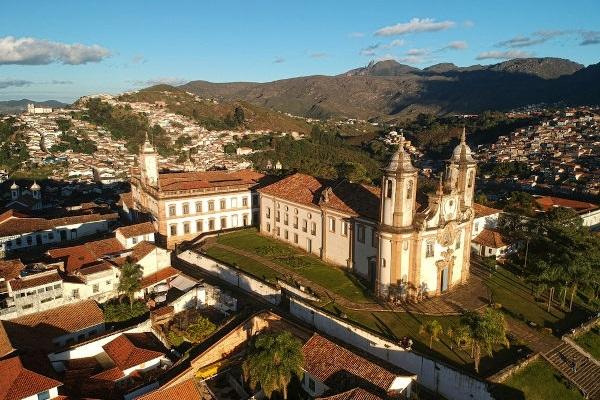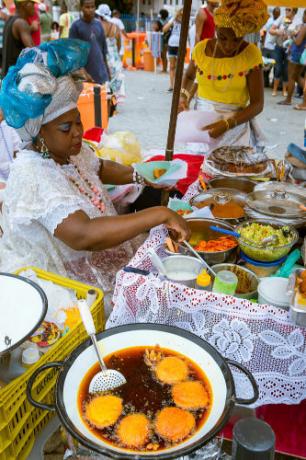O cultural heritage it is every material object (such as buildings and monuments) and immaterial (such as religious festivals and culinary traditions) that are part of a people's culture. It is chosen so that it can be preserved. In our country, the conservation of cultural heritage is carried out by an institution called Iphan.
Lookalso: Differences between natural landscape and cultural landscape
Understanding cultural heritage
We all like to remember the good times we lived in the past, whether with our parents and siblings, or with cousins and friends. This is something normal and part of our lives.
Think to yourself: do you have many memories stored in your memory? It is very common to keep photos of parties, outings and meetings we made with friends and family. In addition, many people keep letters, party favors and gifts as a way to remember important events and loved ones.

When we do this, we can say that we have assembled a "collection" of the most important moments of our life, a
patrimonypersonal with situations that marked for each of us. Well, this idea of preserving objects, photographs and videos of landmark events is also important for the our society, with many people seeking to register and preserve significant objects of our culture.But you might be wondering how this works, right? Throughout human history, many buildings, monuments, clothes and everyday objects were left to us and are a living demonstration of the great deeds performed by man in the past, even without the great technology that exists at the moment. Many items from the past have become patrimonycultural.

Why is it important to preserve cultural heritage?
Ensuring the preservation of all this cultural heritage is very important for our society, as it allows us to form our cultural identity. This is why the concept of cultural heritage was developed.
O cultural heritage it is basically everything that is produced by us human beings that demonstrates the value of our culture. |
Culture is important to us because it allows us to develop our ability to speak, interact with other people, as well as skills that will help us to produce and do different things. It also allows us to be able to identify with the place where we grew up and live. That's why the preservation of cultural heritage is important.
Can cultural heritage be defined only by monuments and objects?
We have seen that buildings, monuments, paintings, sculptures and certain man-made objects such as tapestry items, pottery, etc. are considered part of a people's cultural heritage. But experts on this subject now understand that it is not only material culture that can be considered heritage. material culture is all it is concrete, that is, everything we can touch.

nowadays we too we consider that crafts, knowledge, festivities and tradition are part of the cultural heritage. An example is the craft of the Bahians who handcraft acarajé, a typical Bahia food. To differentiate material cultural goods from those that are not material, experts created the concept of patrimonyculturalmaterial and patrimonyculturalimmaterial.
Examples of intangible cultural heritage are:
Popular festivals (religious or not);
Abilities of certain cultures to produce certain types of objects;
The cuisine of certain regions;
Languages;
The traditions that are manifested by the people, etc.
Therefore, when we preserve material cultural heritage, we are acting to ensure the preservation of physical assets that can be destroyed over time. When we talk about intangible cultural heritage, we are talking about cultural expressions and traditions that need to be preserved so as not to disappear over time if knowledge of these cultural traditions is not transmitted to the new generations.
In our country, the preservation of intangible cultural heritage is guaranteed by a law which was approved in the year 2000. The choice of items to be preserved follows a series of rules established by the institution responsible for taking care of the material and immaterial cultural heritage of our country: o National Historical and Artistic Heritage Institute, the Iphan.
Accessalso: Culture: understand once and for all the meaning of this word
Brazil's cultural heritage
To better understand the types of material and immaterial culture items that exist, we can use the example of our country, so we can also get to know a little of what is part of the cultural heritage of the Brazil. Come on?

material cultural heritage
We can list the following examples of material cultural heritage of our country:
Church of Nossa Senhora do Carmo, in Ouro Preto (MG);
Church of Nossa Senhora dos Remédios, in Fernando de Noronha (PE);
architectural and urban complex of the city of Goiás (GO);
Teatro Amazonas, in Manaus (AM);
Hercílio Luz Bridge, in Florianópolis (SC).
Intangible cultural heritage
These are the intangible cultural heritage of our country:
Office of the Baianas de Acarajé, in Salvador (BA);
Círio de Nossa Senhora de Nazaré, in Belém (PA);
Capoeira Masters' Office;
Bossa Nova, in Rio de Janeiro (RJ);
Sweet Traditions of Pelotas (RS).
Image credits:
[1]lazyllama and Shutterstock
